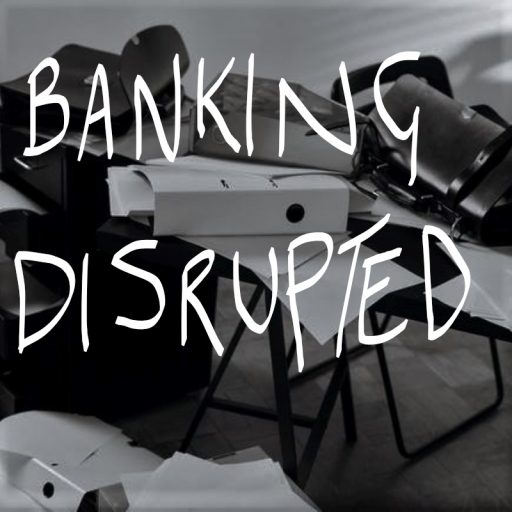If COVID has done one thing, it has forced the digitisation of the retail market. We have seen many retail failures over the last 14 months, with big brands like Debenhams disappearing from the high street. Conversely, online sales have skyrocketed as consumers have been unable to shop in physical stores. According to Internet Retailing, online sales have grown at an astronomical rate of 129% during the first few months of 2020, and this is for both the UK and Europe
Following such a turbulent year, the world of retail is perhaps transformed in a way that has never been experienced before. Some of the critical trends examined by the latest Capgemini report, Predications 2021: Customer Experience Retail, highlights many implications for retailers and consumers. Here we discuss three of the key trends in the report, and assess the potential disruptive implications for Banking & Financial Services providers.
Retail Channel Omnipresence
The rise of click-pay-collect has paved the way for a more omnipresent channel strategy. Consumers now have a broader choice looking for retailers, offers, and deals and how they purchase and receive goods and services. Retailers have had to “beef up” their online presence, with early adopters of the omnipresent shopping experience winning during 2020. Looking at the gig economy, and more importantly the creator industry, we have simultaneously seen several micro-businesses emerge as PAYE employment prospects become more uncertain. The stage is also set with “David and Goliath” style collaborations, as we see brands like Etsy using their marketplace platform to attract niche creators, and artists looking for a way to raise awareness/sales of their products.
Banking Implications: Payment friction in the online space needs to be further eradicated, favouring a more “integrated” experience. The check-out process needs to look like part of the journey design, and something that can be invoked at any browsing stage. Broader options to offer real-time pay-later or instalment options are critical, with a need for more changed-my-mind options. These can take the form of reviewing how something has been paid for after the event. Options here could include giving consumers the choice to switch a credit card purchase to a short-term loan for larger ticket items, even after the transaction has been completed on the card. As online becomes more entrenched, better fraud protections need to be put in place to shield consumers from fraud and identity theft.
Contactless Shopping
The move to a £45.00 transaction limit for contactless transactions was necessary during the pandemic, but now this faster way of paying is displacing cash rapidly. As identified in the 2021 Predictions report, “Technologies like AI, robotics, IoT, RFID, QR codes, virtual and augmented reality (VR/AR), connecting these technologies enable retailers to bring the convenience of online shopping to offline shops and stores, and the richly interactive environment of offline shopping to the world of e-commerce.”
Banking Implications: Customer-centric to Hygiene-Centric Payment models may become the baseline for everyday face-to-face transactions. As concerns around viruses and contamination persist, more and more mechanisms for transitioning towards becoming more touch-less in the broader sense are needed. Shifting the POS-based contactless limits from £30.00 to £45.00 was a sensible move, but what happens after £45.00? So a key design feature of any payment acceptance method in the future should be more hygiene-centric, as even things like fingerprint/facial recognition become challenged because of gloves/facemasks. Not so much a gimmick as a potential necessity as the world becomes increasingly aware of the significant damage a pandemic can create in a short period of time.
Sustainability
Recent research from the Capgemini Research Institute shows 79% of consumers are changing their purchase preferences based on social responsibility, inclusiveness, or environmental impact. Retailers and service providers that minimise their carbon footprint, have transaction off-set measures in place, and source responsibly are attracting super-fans as social and commercial agendas converge. This trend is expected to stay as concerns around the climate crisis profoundly affects any, and perhaps even every type of business model, as a more significant percentage of retailers and organisations step up to do their part to support environmental efforts
Banking Implications: Most credit cards and transaction fees are set at a blanket level, and do not consider the nature of spend, and where that spend is taking place. Hence, there is the option to consider making transactions or payments undertaken with more sustainable organisations cheaper than those that are not sustainability friendly. Also, the “form” factor of payment methods can be made more eco-friendly. Payment cards could be produced using more sustainable materials, if we reflect on the amount of plastic being used to manufacture cards annually, which is the equivalent weight of 150 Boeing 747 planes, this is a no-brainer. Such an astronomical amount of plastic is undoubtedly putting a strain on the global fight for sustainability. Newer options like manufacturing from ocean plastics, other biodegradable and recyclable materials may be the key to eco-friendly cards. Also, recent trends in looking at cryptocurrency for everyday transactions may further drive innovation in payment acceptance economics, security, and sustainability.
Remote & Autonomous Transacting
Whether this is driven out of innovation or the need for more autonomous and environmentally friendly shopping options, the world of self-drive and drone delivery are becoming a reality. Capgemini Research highlights that “Over the next year, autonomous delivery initiatives are likely to remain focused on ‘last mile’ solutions, employing self-driving vehicles and airborne drones for trips between fulfilment centres and consumers’ homes.” Outside of the delivery economics, there are other benefits to managing logistics more efficiently using blockchain technology to manage elements such as smart contracts. As these models evolve, the underlying payment infrastructure also needs to change to accommodate new styles of organisational model.
Banking Implications: Unattended Payment Terminals (UPTs) have existed in the form of pay-at-pump for fuel, vending machines, self-serve check-outs and toll-roads for several years. However, there is a question mark as to how well established UPTs will work in the autonomous retail environment, and if there is a need to expand the technology. Even though payment providers, such as WorldPay, have been trialling drone-delivery-payment options, much work is required to manage the regulatory framework to accept this format. Again a lot of the development here will be dependent upon consumer feedback, initial research from Clutch is suggesting, “The largest percentage of online shoppers (39%) say drone delivery won’t impact their purchasing decisions, but 25% say they would be less likely to order a package if they knew a drone was going to deliver it…. Online shoppers are worried about their packages getting damaged during delivery (20%) or the drone getting stolen or hacked (19%). Companies will need to conduct extensive testing to minimise these risks as they roll out drone delivery.”
For more information on retail trend, please read the latest Capgemini report on Predications 2021: Customer Experience Retail




